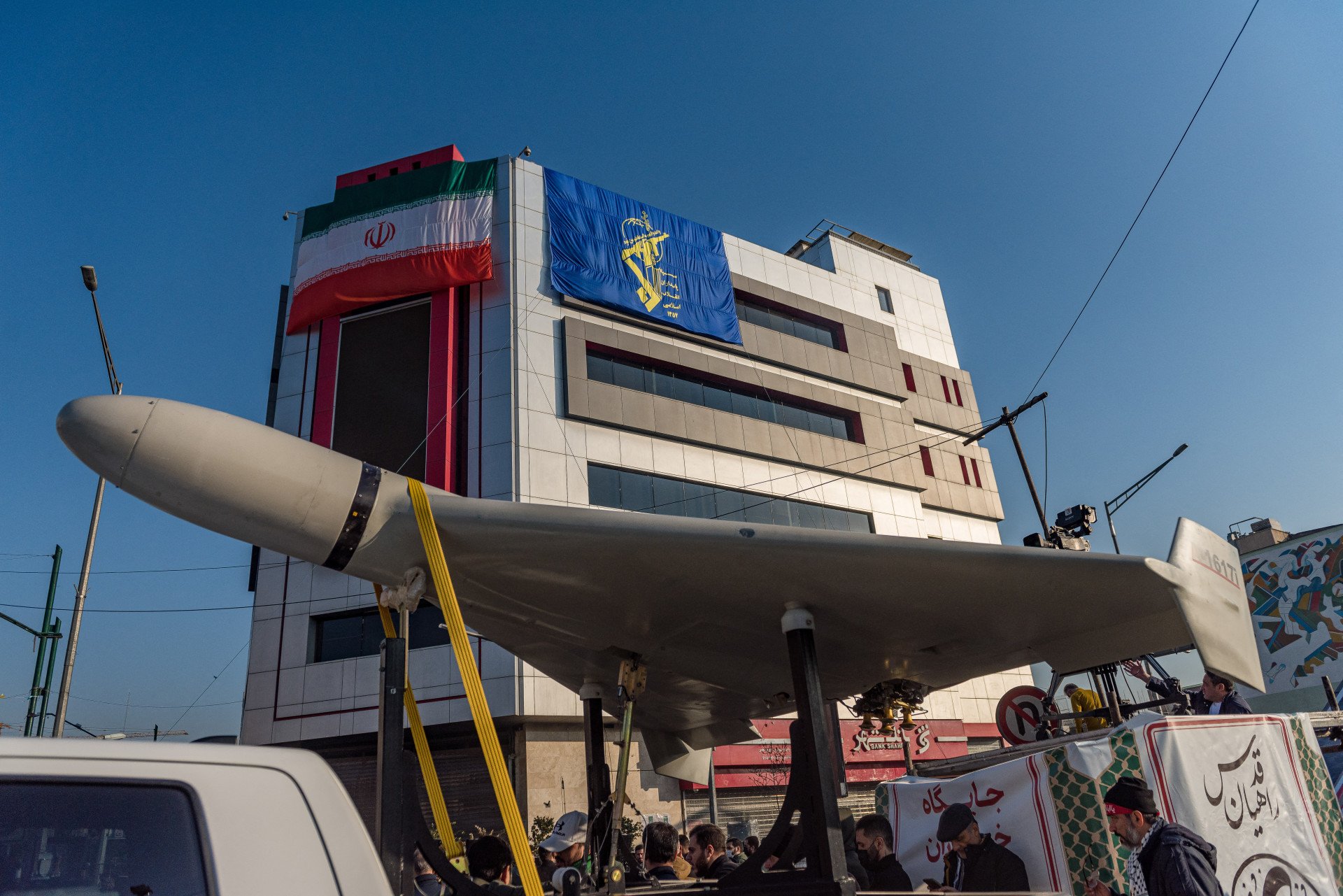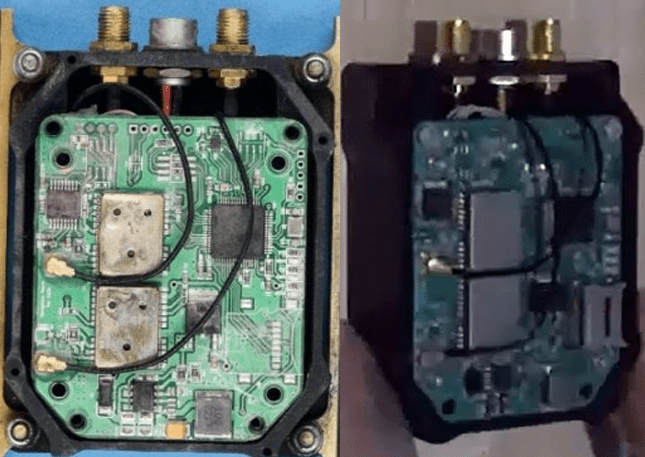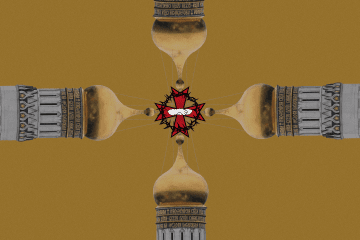- Category
- World
How Russia Taught Iran to Use Dual-Goods to Produce Weapons That Strike US Bases

Iran used its Shahed drone—also deployed by Russia to wage aggressive war in Ukraine—to kill US troops. The attack relied on Western tech smuggled through a sanctions evasion scheme. Russia’s playbook is now a template for revisionist states to wage war and terror.
“Iran-backed militias murdered three American soldiers and wounded dozens more in a brutal drone attack at the Tower 22 base in Jordan,” US Deputy Attorney General Lisa Monaco said. The Iranian-produced Shahed drone struck US “Tower 22” in January 2024, killing three US soldiers and injuring 40 others.
The drone’s wreckage left a trail of evidence, which led straight to two men: Mahdi Mohammad Sadeghi and Mohammad Abedini. US investigators found that the drone's navigation system contained components of US origin illegally exported by the men.
Sadeghi and Abedini were charged with conspiring to export US-origin electronics to an Iran-based supplier of the Islamic Revolutionary Guard Corps (IRGC) in December 2024. Abedini was also charged with providing material support to a foreign terrorist organization (FTO), the IRGC.
The IRGC answers to Iran’s Supreme Leader and operates far beyond Iran’s borders. They arm, train, and fund terror proxies—Hamas, Hezbollah, Houthis, and Kataib Hezbollah—the Iran-affiliated militia that launched the Tower 22 attack.
Though the “Islamic Resistance in Iraq” claimed responsibility, US officials identified Kataib Hezbollah as the likely executor. The message was clear: even miles from the front lines of Ukraine, the threat of Iranian proxy warfare reaches globally.

The scheme behind the terror attack against US military
Sadeghi and Abedini’s role
Mahdi Mohammad Sadeghi, a dual US-Iranian national, co-founded Tacit Motion Inc., a California-based company focused on wearable fitness monitoring equipment, in 2015. Officially focused on fitness wearables, the company received funding from the Iranian National Elites Foundation (INEF)—a government-backed initiative designed to attract Iranian professionals and scientists abroad to contribute to the regime’s domestic development.
In exchange, Sadeghi collaborated with an Iranian company, transferring US electronics and technical knowledge from Tacit Motion back to Iran.
By 2019, he was working at Analog Devices Inc., a US semiconductor manufacturer, where he accessed sensitive MEMS (micro-electromechanical systems)—key components in modern drone navigation. These components are export-controlled under US law, requiring a license to send abroad.
MEMS technology, while dual-use in nature, is a key enabler of Iran’s drone program, including the Shahed series used in attacks on US forces and exported to Russia for use in Ukraine.
Mohammad Abedini Najafabadi (Abedini), an Iranian national, co-founded San’at Danesh Rahpooyan Aflak Co. (SDRA) in Iran in 2011 alongside Kaveh Merat and Hassan Salarieh, the current head of the Iranian Space Agency.

After obtaining Swiss citizenship, Abedini used his status to facilitate the shipment of US-origin electronic components to Iran. To circumvent US export control laws, which prohibit unauthorized exports to Iran, Abedini established Illumove SA, a front company in Switzerland acting on behalf of SDRA.
How they smuggled dual-use goods for Iranian drones
The IRGC Aerospace Force is responsible for Iran’s strategic missile, air, and space programs. Abedeni’s SDRA has worked on multiple projects in coordination with the IRGC Aerospace Force, including work on guided rockets and integrated navigation systems.
The navigation system used in the drone attack on Tower 22 was the Sepehr Navigation System, manufactured by the SDRA. The Sepehr Navigation System is primarily designed for deployment in unmanned aerial vehicles (UAVs), as well as cruise and ballistic missiles.

Approximately 99% of SDRA’s sales of the Sepehr Navigation System, which are used in IRGC one-way attack drones, were to the IRGC’s Aerospace Force, according to Iran Watch
MEMs enhance the accuracy, survivability, and effectiveness of Iranian UAVs and were components of SDRA’s Sepehr navigation systems. MEMs have also been used in Sadeghi’s fitness equipment, making them easier to transport and evade sanctions.
Sadeghi and Abedini allegedly procured electronics and technology for SDRA through Illumove and Tacit Motion Inc. Both Abedini and Sadeghi smuggled MEMS to Iran in hand luggage on flights. Adebini was once granted permission from Geneva airport officials to take SDRA parts on a flight to Tehran in carry-on luggage. He falsely told them that they were general parts with no restrictions.
Between 2016 and 2024, Abedini and Sadeghi illegally obtained US-made MEMS technology and sensitive technical data from Analog Devices their various other companies, reexporting them from Switzerland to Iran in defiance of export controls. Ultimately aiding the IRGC in its terror attack.
Sadeghi was arrested in Massachusetts. Abedini was detained in Milan, Italy, at the request of US authorities.
Both individuals face up to 20 years in prison, three years of supervised release, and fines of up to $1 million. Abedini faces additional charges, including conspiracy to provide material support to a designated Foreign Terrorist Organization resulting in death. If convicted, he could receive a sentence of up to life in prison, lifetime supervised release, and a fine of up to $250,000.
Tehran’s tech striking Ukraine
Sepehr sales skyrocketed by more than 500% after Iran began providing Shahed drones to Russia in 2022, making it likely that SDRA-manufactured components have also guided attack drones to targets in Ukraine, according to Iran Watch.
The US sanctioned the SDRA in December 2024 to “prevent the country from supplying arms to destabilizing actors, including Russia and terrorist proxies.” The US also sanctioned Illumove SA in the same month for its pivotal role in securing international technology for SDRA.
How Russia and Iran get Western technology for weapons
Reverse engineering and technology sharing
Russia has transferred captured US and NATO weapons from Ukraine’s battlefield to Iran for reverse engineering, helping Iran to develop indigenous versions of these advanced systems, circumvent sanctions, and reduce reliance on external suppliers.
Sadid-365 anti-tank guided missile: Iran has developed the Sadid-365 missile, reportedly by reverse-engineering the US-made Javelin system.
Shahed-171 Simorgh UAV: Iran reverse-engineered the US RQ-170 Sentinel drone, resulting in the Shahed-171 Simorgh UAV.
Components in military systems
Weapons used by Russia to wage war on Ukraine, whether domestic or Iranian, can only strike thanks to Western components. Both Russia and Iran have utilized dual-use semiconductors and microelectronics in their military systems. A significant portion of these components originates from US and European manufacturers.
52 electrical components manufactured by Western companies were found in Iran’s Shahed-131 drone and 57 in the Shahed-136 variant, used by Russia to target Ukraine.
Since 2022, over 2,500 components have been found in 30 samples of Russian weaponry, including fighter jets, the Ka-52 "Alligator" helicopter, and Kalibr missiles. 2,000 aircraft components were supplied to Russia from 22 countries, primarily Western, and 64% of the parts came from US headquartered companies.
All of Russia's missiles use electronic components, mainly from Western companies. These missiles are the Kh-101, Kinzhal, Kalibr, Iskander, Tsirkon, and Kh-59.
Russia’s “hunter drone”, the Orlan drone, is filled with Western components.
Between July and November 2023, German firm Kontron shipped more than €3.5 million ($3.9 million) worth of sensitive telecommunications equipment to Russia.
The US and Europe have placed heavy restrictions and sanctions on the supply of electronics and dual-use goods to Russia. Iran has also been under heavy sanctions for over 30 years. However, Russia has persistently found a way to evade these restrictions through front companies, shell companies, and other murky schemes. Iran has followed suit, as seen in the Sadeghi and Abedini SDRA scheme.
Russia’s use of shell companies
Pre full-scale invasion of Ukraine, Russia had the world’s largest volume of dark money hidden abroad—about $1 trillion. Much of this dark money is hidden within shell companies, used for circumventing sanctions and now, for moving Western components to be used in military arsenal.

135 Bonham Strand, an address in Hong Kong, was found to facilitate the shipments of restricted US military technology to Russia through four shell companies. Russia received nearly $4 billion in US-sanctioned chips and sensors for Russian military use since its full-scale invasion of Ukraine began.
Even with US sanctions and trade restrictions, “Russia established such a robust parallel supply chain that it imported almost the same number of critical chips in the last three months of 2023 that it did in the same period in 2021”, the New York Times reported. A total of $5 billion worth of sanctioned goods disappeared during transit through Russia. In 2023, European Union shipments, including sanctioned goods destined for countries in Central Asia and the Caucasus, never reached their final destinations.
Russia’s direct production of dual-use goods
One of the most notable examples is the Shahed 136 drone, a loitering munition designed in Iran. Russia has not only imported Iran’s drones but has also established production facilities within its borders. In Alabuga Special Economic Zone in Russia’s Tatarstan region, Russia has set up a plant to manufacture the 136, rebranded by Russia as the Geran-2. It plans to produce up to 6,000 units by mid-2025.
The initial assembly involved Iranian-supplied kits, its production involves a hybrid mix of both Russian and Iranian parts, then full-scale manufacturing by Russia.
This partnership benefits both parties. Russia will have its own capabilities in developing modern drones, and Tehran will benefit from access to military technologies and Russia’s own equipment.
“The Iran-Russia drone partnership is more than a tactical alignment—it’s a blueprint for future military cooperation among revisionist states,” Geopolitical Monitor said. “As the Ukraine war continues and new flashpoints emerge in the Middle East and beyond, this alliance must be seen not as an anomaly, but as a warning sign.”
-46f6afa2f66d31ff3df8ea1a8f5524ec.jpg)

-29a1a43aba23f9bb779a1ac8b98d2121.jpeg)
-c9be02aad2c169e14ebc2a41d0ba02dc.jpg)
-605be766de04ba3d21b67fb76a76786a.jpg)
-56e0bfa71829348120777fba0ad5ba46.png)

